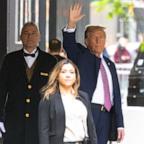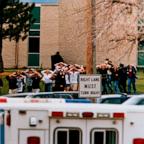Scientists Explain Mystery of 'Face Blindness'
Researchers are unlocking the secrets of a rare brain condition.
Nov. 24, 2008— -- Herbert Lindenberger, a retired professor of literature at Stanford University, was picking up his wife from the San Francisco airport after she took a two-week trip to visit their grandchild.
Lindenberger stood at the baggage claim carousel staring intently into each face that passed by. He could have been any one of those at the carousel, waiting for that familiar "click" in his brain when he would recognize the face of a loved one and greet her with a hug.
But for Lindenberger, that "click" of recognition never comes. It wasn't until Lindenberger's wife began waving at him that he was able to distinguish who she was.
Lindenberger has prosopagnosia, commonly known as "face blindness."
"I have a mild case, but it's bad enough," Lindenberger said. "I even failed to recognize the faces of each of my children after I hadn't seen them for several months."
Previous research of the disorder suggests that about 1 to 2 percent of the general population has the condition, which affects one's ability to recognize faces.
The condition has continued to puzzle scientists for years because brain scans of prosopagnosia patients reveal that their brain areas that are devoted to face processing are of normal size and activity level. More baffling is that those with the disorder appear to be able to recognize other objects easily.
But new research on face blindness, published in the journal Nature Neuroscience, may provide information that could help unlock the secrets of this rare disorder.
Researchers from Carnegie Mellon University in Pittsburgh compared six people with prosopagnosia to 17 people without the disorder.
According to Cibu Thomas, lead study investigator and professor in the department of psychology at Carnegie Mellon University, his team hypothesized that, though a patient can technically "see" the faces he is looking at, his brain is unable to put the various facial features together into a clear enough picture that he can recognize the person.




